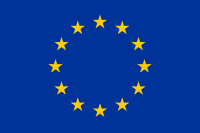#4 Policy Recommendation Area
Make the heritage sector a pillar of the European digital public space
4.1 Accelerate interoperability of digital heritage collections by adoption of shared standards
Target Stakeholders
![]() Policy makers at the EU and national level
Policy makers at the EU and national level
![]() Heritage Networks
Heritage Networks
![]() Cultural Heritage Institutions
Cultural Heritage Institutions
Recommendation
Today we have the means to create a genuinely connected web of culture. At the same time, we have to deal with the “graveyard of heritage platforms”, relics of completed initiatives with no sustainability, often extinct due to a lack of connections with the broader ecosystem. The principle of interoperability, as applied to digital heritage, will make it more accessible, resilient and relevant. It will also enable CHIs to enrich available datasets by making them interconnected and better structured.
Based on the European Strategy for Data, interoperability is a fundamental principle underlying European common data spaces. Therefore, the cultural heritage sector should support the establishment of strong interoperability rules and standards, as these will in particular benefit the reuse of digital heritage. Ensuring that digital archiving standards are equally relevant for digitised and born-digital collections, allowing users to access old databases and platforms from past projects, is paramount to preserving the work of past EU funded initiatives.




